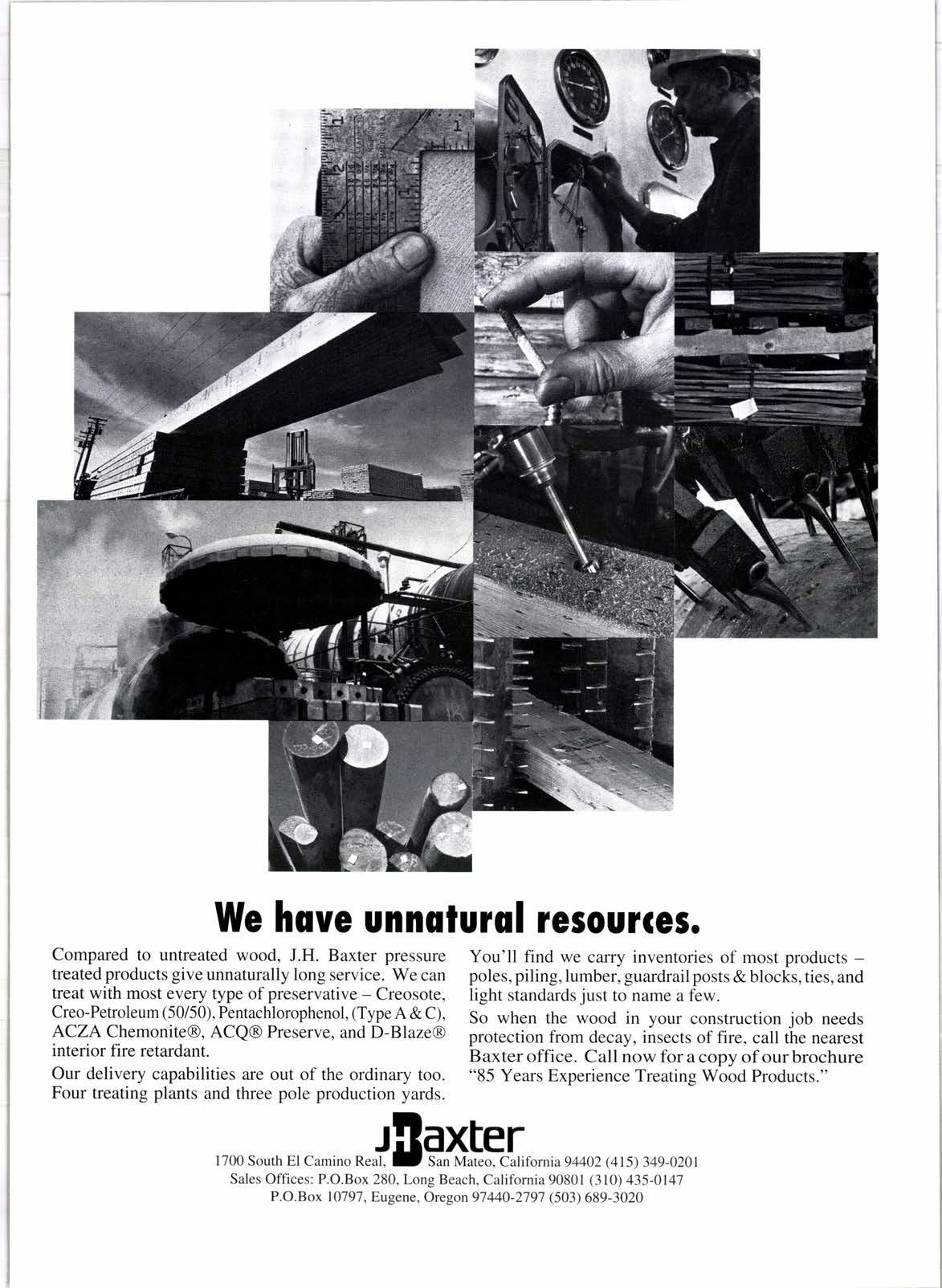
2 minute read
ALSC to police treated quality
lnf RADE stamps of agencies such lllas the Southirn Pini Inspection Bureau, Timber Products, Florida Lumber Inspection Service and other similar "third party" independent inspection agencies are familiar to dealers. Not so familiar, however, is the long standing overview role of the American Lunber Standards Committee (ALSC) which has long verified unreated lumber grades.
As of Jan. 14, the ALSC overview role of policing the inspection agencies has been extended to treated wood. ALSC has assumed the quality control overview functions formerly provided by the American Wood Preservers Bureau, which has ceased operations. The AWPB clover leaf quality mark is being replaced by the grade stamps of agencies certified by the ALSC for supervisory and lot inspection of pressure treated wood products.
Dennis Hayward, executive director of the Westem Wood Preservers Institute, expliains the significance of this important transition: "The successful use of pressure treated wood depends on getting properly treated wood. It is not only important from a service life viewpoint, it is mandated by the Unifomr Building Code anytime wood is in contact with the ground or used structurally where exposed oo the weather."
"Dealers should be aware that improperly identified treated wood could be rejected by building inspectors," he adds, citing an instance where one contractor was required to jack up a two story building because of irproperly identified sill plates.
To avoid selling improperly identified treated material to their customers, dealers should stock only pressure treated wood bearing the quality mark of an approved independent testing agency. The stamp must indicate compliance with standards of the American Wood Preservers Association and bear the identification of an approved agency. ALSC conducted a rigorous procedure before accrediting these independent agencies even though most had been fornerly accredited by AWPB.
Section 2505 of the Uniform Building Code requires that preservative treated wood be identified by the quality mark of an approved testing agency in accordance with UBC Standard 25-12. This Standard states that the pressure treated wood "shall be subjected to quality control canied out by both the treater and the control agency."
How does a dealer make sure pressure treated wood is properly Eeated and in compliance with applicable code requirements? He should insist upon the following from a supplier:
Accredited Agencies
The following agencies have been accredited by the Board of Review of the American Lumber Standards Committee for supervisory and lot inspection of pressure treated wood products. Bode lrcpectionrlnc.
l^ake Oswego, Or.
Califonria Lumber Impectim Sen'ice (CLIS)
San Jose, Catrlori& Lumber Inqrec{ion Service (FLrS) lvladison, Wi, Southerrr Pine Impection Bureau (sPrB)
Perry, Fl. Lundell Inspection, Inc.
Minneapolis, Mn. McCutchan Impection, Inc.
Portlan4 Or. PFS Corp.
Pensacola, Fl. Tinbcr Products (TP) Conyers, Ga, War:rock lfersey Coquitlam, BC
West Coast Lumber Inspection Bureeu(WCLIB)
Portland- Or.
(1) Require all pressure Eeated wood to be identified by the mark of an approved independent inspection agency operating under ALSC overview. (2) Require the quality mark to state "Above Ground" or "Ground Contact'' use as applicable. Some agencies may include the LP reference, long used to indicate the CCA or ACZA waterborne treatment, for "Above Ground" LP2 or "Ground Contact" LP22 use. (3) Require the quality mark to indicate the correct retention level specified in AWPA Standards.
Story at a Glance
Tips for making sure your treated wood products are in compliancs as ALSC begins its role as industry's quality policeman ... 10 agencies certified to inspect treated wood products ... new names and quality marks that dealers need to recognize.
We hoYe unnulurql resout(es.
Compared to untreated wood, J.H. Baxter pressure treated products give unnaturally long service. We can treat with most every type of preservative - Creosote, Creo-Petroleum (50/50), Pentachlorophenol, (Type A & C), ACZA Chemonite@, ACQ@ Preserve, and D-Blaze@ interior fire retardant.

Our delivery capabilities are out of the ordinary too. Four treating plants and three pole production yards.
You'll find we carry inventories of most productspoles, piling,lumber, guardrail posts & blocks, ties, and light standards just to name a few.
So when the wood in your construction job needs protection from decay, insects of fire, call the nearest Baxter office. Call now for a copy of our brochure "85 Years Experience Treating Wood Products."










